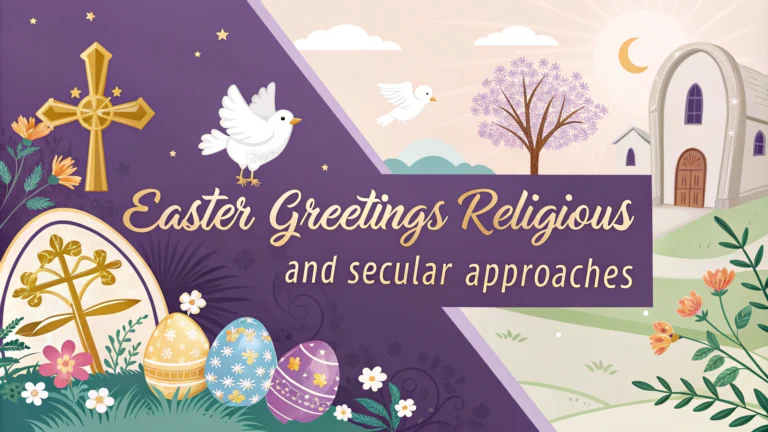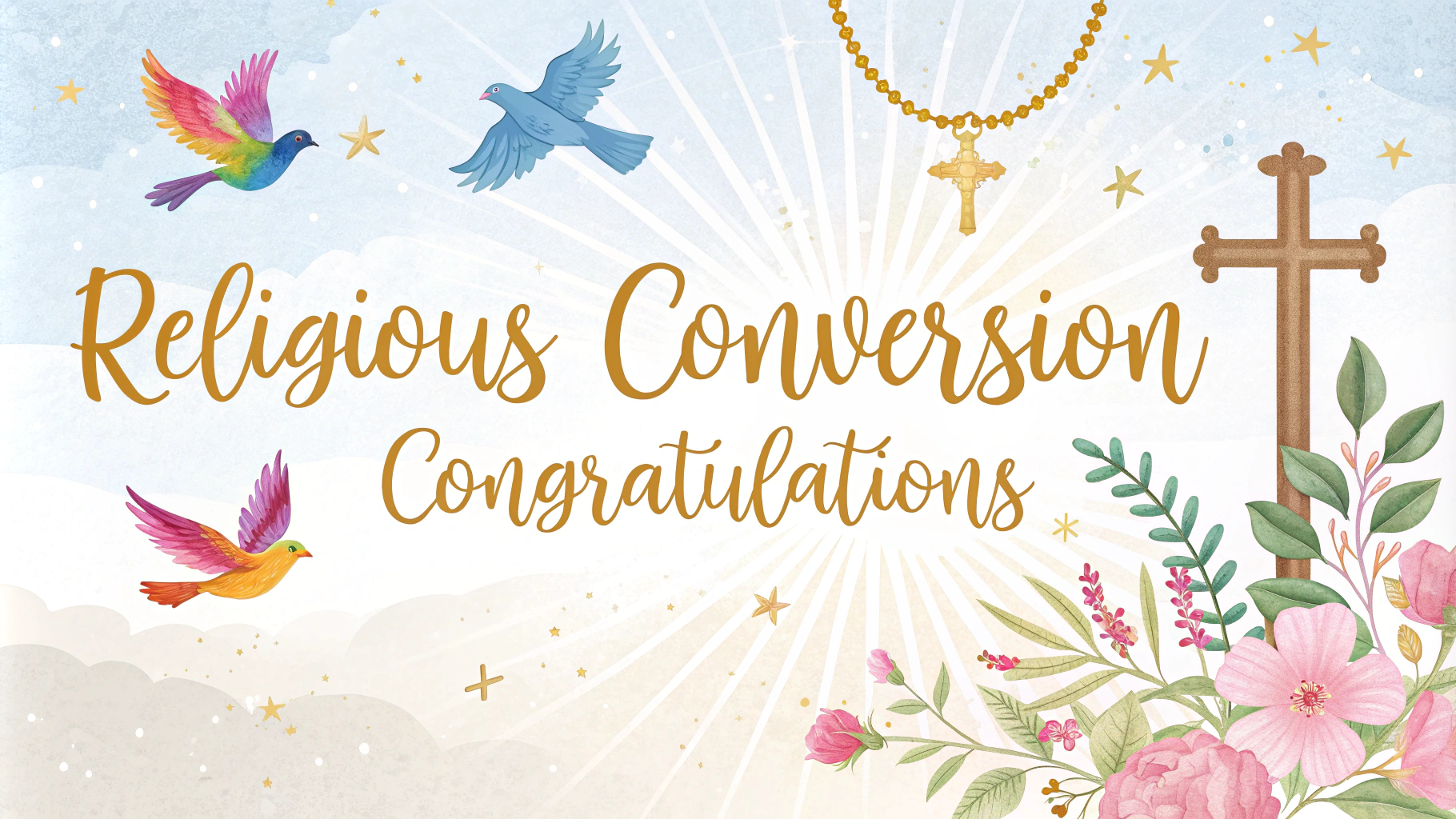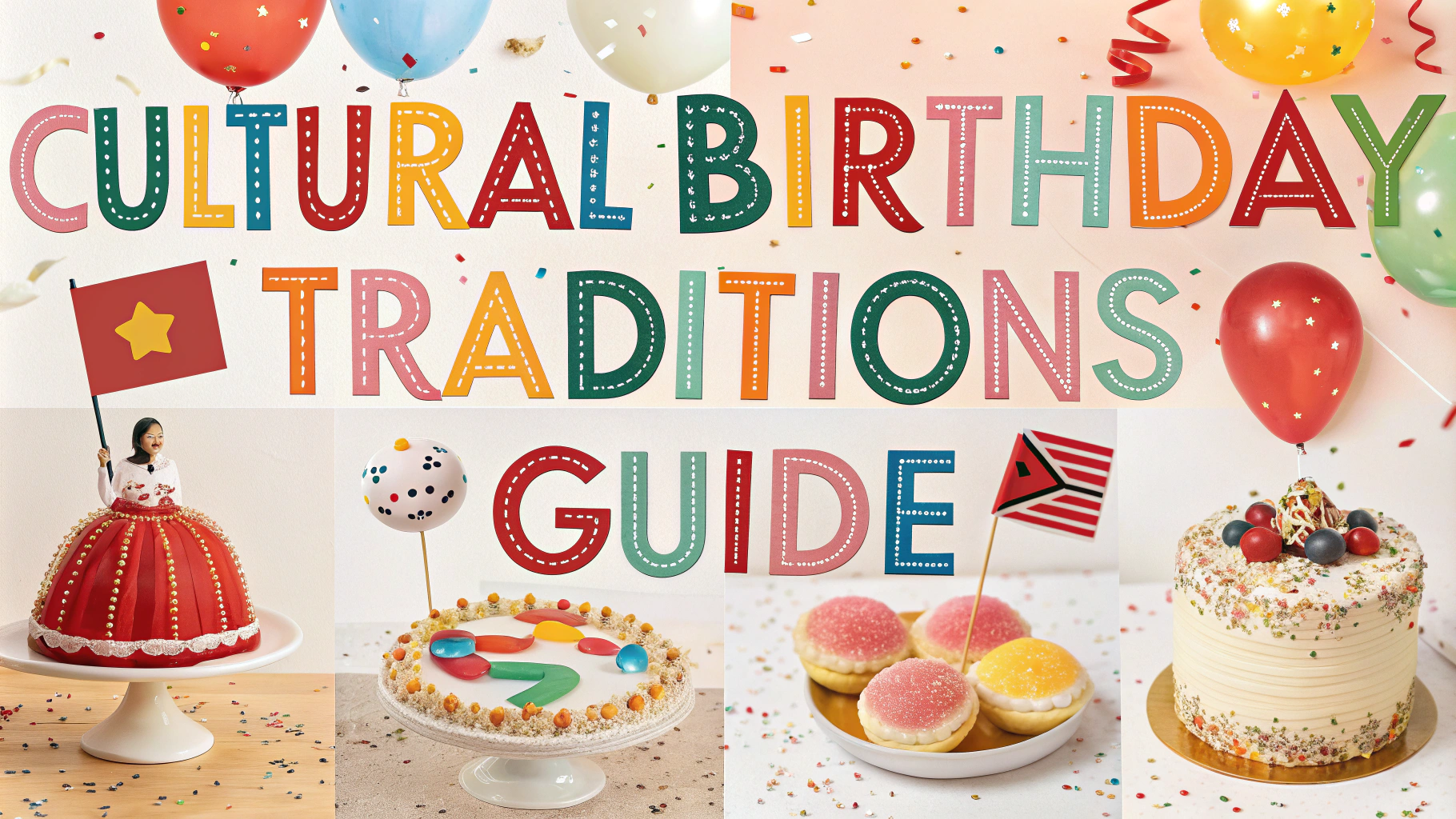Easter greetings come in two main forms: religious messages that celebrate the resurrection of Jesus Christ and secular wishes that focus on spring renewal and festive traditions.
Religious Easter Messages
“He is risen” stands as the most traditional and powerful Christian Easter greeting, often followed by the response “He is risen indeed!”
- “May the miracle of Easter fill your heart with peace and joy”
- “Rejoicing in the hope of Christ’s resurrection”
- “Blessed Easter! Let us celebrate our Savior’s victory”
- “Praying for God’s renewed blessings this Easter season”
Secular Easter Greetings
Non-religious Easter messages typically focus on springtime themes and family celebrations.
- “Happy Spring! Wishing you a basket full of Easter joy”
- “Here’s to new beginnings and sunny days ahead”
- “Hop into happiness this Easter season”
- “Sending warm wishes for a wonderful Easter celebration”
Professional Easter Greetings
Business-appropriate Easter messages should maintain a respectful balance between festivity and professionalism.
- “Wishing you a pleasant Easter holiday”
- “Enjoy this spring season with your loved ones”
- “Happy Easter from our team to yours”
Tips for Writing Easter Messages
- Consider your audience – Match the tone to the recipient’s beliefs and preferences
- Keep it personal – Add a specific reference to shared memories or traditions
- Be timely – Send greetings a few days before Easter Sunday
- Include family – Mention family members by name when appropriate
Social Media Easter Greetings
Social platforms welcome shorter, more casual Easter messages with relevant hashtags.
- #HappyEaster with spring emojis
- “Easter joy to all my friends! “
- “Blessed Easter weekend everyone “
Easter Card Writing Guide
| Recipient | Suggested Approach |
|---|---|
| Family | Warm, personal messages with specific memories |
| Friends | Casual, upbeat greetings |
| Colleagues | Professional, brief well-wishes |
| Religious Community | Faith-based messages celebrating Christ |
Cultural Easter Greetings
Different cultures celebrate Easter with unique traditional greetings and customs that reflect their heritage.
- “Felices Pascuas!” – Spanish Easter greeting
- “Buona Pasqua!” – Italian Easter wish
- “Frohe Ostern!” – German Easter greeting
- “Joyeuses Pâques!” – French Easter blessing
Children’s Easter Messages
Easter greetings for children often incorporate playful elements and holiday characters.
- “Hop hop! The Easter Bunny is on his way!”
- “Time for egg hunts and chocolate treats!”
- “Sending Easter hugs and bunny kisses”
- “May your Easter basket be filled with joy”
Digital Easter Greetings
Email Format
- Use cheerful but professional subject lines
- Include seasonal imagery where appropriate
- Keep messages concise and mobile-friendly
Virtual Cards
- Personalize with photos and custom messages
- Add interactive elements or animations
- Schedule delivery for optimal timing
Conclusion
Easter greetings serve as meaningful ways to connect with others during this spring celebration. Whether choosing religious or secular messages, the key is to personalize your greetings while respecting the recipient’s beliefs and traditions. Remember to consider your audience, timing, and delivery method to make your Easter wishes truly special.
For best results, combine traditional sentiments with personal touches, and adapt your message style according to your relationship with the recipient. Whether sending digital greetings or traditional cards, authentic and thoughtful messages will always be appreciated during the Easter season.
FAQs
- What is the religious significance of Easter greetings?
Easter greetings in religious context celebrate the resurrection of Jesus Christ. Traditional religious Easter greetings often include phrases like “He is Risen” with the response “He is Risen Indeed” in Christian traditions. - What are common secular Easter greeting phrases?
Secular Easter greetings typically focus on spring themes and include phrases like “Happy Easter,” “Hoppy Easter,” “Happy Spring,” or references to the Easter Bunny and Easter eggs. - Why do some Easter greetings feature rabbits and eggs?
Rabbits and eggs are symbols of fertility and new life associated with spring. These symbols were incorporated into Easter celebrations as part of secular traditions and pagan spring festivals that merged with Christian celebrations. - What languages traditionally use special Easter greetings?
Many languages have specific Easter greetings: Greek uses “Christos Anesti,” Russian uses “Khristos Voskrese,” Polish uses “Wesołego Alleluja,” and German uses “Frohe Ostern.” - When is the appropriate time to send Easter greetings?
Easter greetings are typically sent during Holy Week (the week leading up to Easter Sunday) and on Easter Sunday itself. Some extend greetings throughout the Easter season, which lasts 50 days in Christian traditions. - What colors are traditionally associated with Easter greetings?
Traditional Easter greeting colors include pastel shades like pink, yellow, blue, and green. Purple and white are significant in religious contexts, representing royalty and purity respectively. - How do digital Easter greetings differ from traditional cards?
Digital Easter greetings often include animations, interactive elements, and instant delivery options. They may incorporate emojis, GIFs, and multimedia elements while traditional cards focus on printed imagery and handwritten messages. - What symbols are commonly used in religious Easter greetings?
Religious Easter greetings typically feature crosses, empty tombs, lilies, lambs, and doves. These symbols represent resurrection, purity, sacrifice, and peace in Christian tradition. - How do Easter greetings vary across different Christian denominations?
Orthodox Christians often use more formal greetings focusing on the resurrection, while Protestant and Catholic greetings may be more varied, including both formal religious and casual expressions. - What are appropriate Easter greetings for non-religious recipients?
For non-religious recipients, focus on spring themes and general well-wishes like “Happy Spring,” “Enjoy the Season,” or simple “Happy Easter” greetings without religious references.







